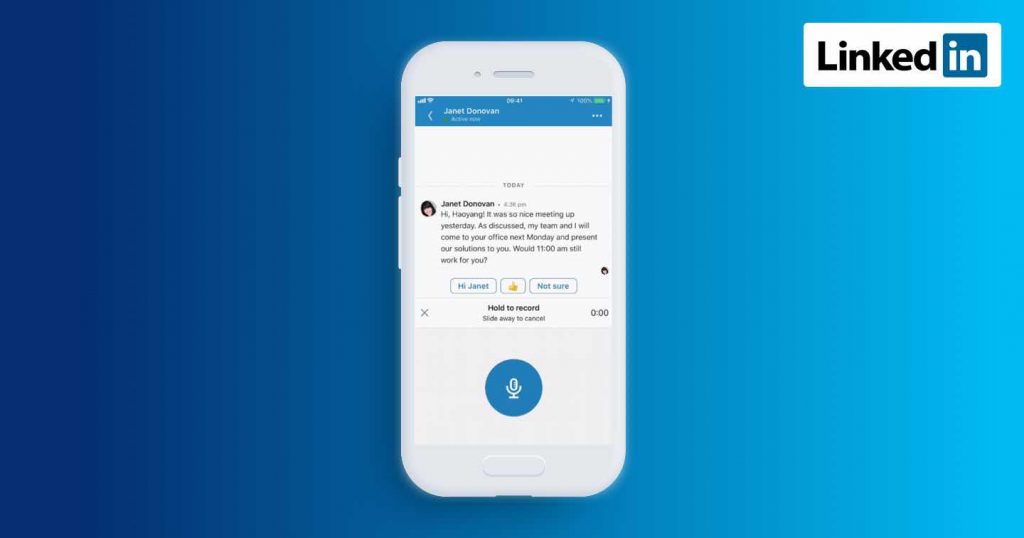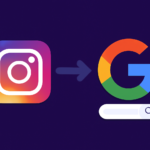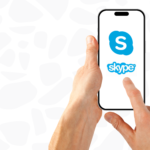A perfect example of a ‘good idea’ in theory that ‘misses’ its real-world mark.
In a seemingly un-wanted move LinkedIn has followed Facebook’s lead and added voice messaging functionality to its armoury of tool and tricks. The purpose of the new feature is to better aid connecting with your personal, professional and peer network within this platform.
LinkedIn is a networking conduit that is primarily targeted at professionals to help forge connections with relevant people, professionals and peers, some of which are known to the user and others that are not.
The voice-recording feature, which is currently being rolled out globally, allows users to leave a message of up to one minute long on iOS and Andriod and is relatively easy to use.
Since the announcement, this latest feature has mostly been ridiculed and described as awkward, undesired, annoying and bizarre. We won’t go on as it’s not very flattering and we’re sure you get the gist of it.
LinkedIn is already criticised for the fact that its users inboxes are often full. Overflowing with unwanted messages and ‘invitations’ from unknown peers in what amounts to a large amount of annoying spam to wade through for a small percentage of relevant connections.
The fear is that this new voice messaging feature provides yet another, arguably easier, method to facilitate contact, which may lead to an increase in volume resulting in even more unwanted messages in your inbox.
LinkedIn has outlined a number of reasons for providing this feature with the core aim being ‘easier than ever to communicate when you want, how you want with your professional community’.
The three main benefits as detailed by LinkedIn are:
- ‘Benefit’ 1
It provides the opportunity to message your desired contacts on-the-go, saving time and also allowing the user leaving the message to better explain more complex ideas without the time involved in typing this out.
The problem we can see here is two-fold. What is time-saving for the messenger, is time-consuming for the receiver as they firstly must listen to a potentially long message and secondly, try and understand its meaning. Ask yourself this, do you want another voice-mail inbox to manage?
- ‘Benefit’ 2.
It’s less intrusive to leave a voice message than calling as this allows the receiver the choice to respond when they are able and on their own terms.
This is true, however, the same can be said about emails and invitations and so this makes this reason redundant.
- ‘Benefit’ 3
It allows better expression of yourself, with your own voice and is more personal providing a better connection and communication experience and means that tone and personality will not be missed as it often is in written word.
This again is true, however, many people don’t like calling someone they don’t know and feel that it’s intrusive. In return, most people don’t enjoy receiving a message from a stranger for no pressing reason. In fact, many people won’t answer a call from a telephone number they don’t know. Whereas, in an email setting the practice is quite accepted and is not viewed as intrusive.
Add to this sentiment the idea that personal conversation is not really the overarching purpose of LinkedIn, which is to create professional connections via professional tools. It is also worth considering that voice messaging might be more suited to Facebook messenger as a social platform but less accepted or appropriate on LinkedIn, which is primarily a professional networking platform.
There is no avoiding the fact that voice messaging is personal and in my mind it has no place on a professional networking platform.
It is also fair to say that a one-minute message from someone you don’t know is not going to go very far to understanding who they really are. In reality, actually sitting down and having a face-to-face conversation is the only way to achieve this.
In addition, it’s largely accepted in this day and age of texting, that message bank is annoying, rarely used and a large percentage of people resent having to listen through it.
Our thoughts
On paper this feature might make sense and sound like a good idea, however the reality of using it just doesn’t seem to add up.
Before using this feature to grow your personal or professional network or to try to generate leads to grow your business, we suggest that you consider whether it’s the right fit for you.
Ask yourself whether it is adding value to the people you’re seeking to connect with or whether it is self-serving because it is easier for you? And consider the impact depending on your conclusion.
Photo credit: https://www.designpractice.io/blog/linkedin-voice-messaging
Sources that have been read and researched in the writing of this blog:
- https://blog.linkedin.com/2018/july/26/voice-messaging-on-linkedin-giving-you-more-ways-to-have-conversations
- https://techcrunch.com/2018/07/27/linkedin-adds-voice-messaging-because-weve-definitely-been-clamoring-for-that/
- https://mashable.com/2018/07/26/linkedin-voice-messaging-oh-god-why/#qwQG5lhJrkqMhttps://www.engadget.com/2018/07/27/linkedin-adds-voice-messaging-why-whyyy/
- https://money.cnn.com/2018/07/26/technology/linkedin-voice-messages/index.html
- https://gadgets.ndtv.com/apps/news/linkedin-voice-messaging-ios-android-web-1890784
- https://www.designpractice.io/blog/linkedin-voice-messaging







